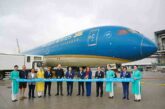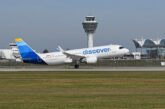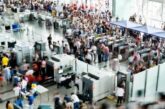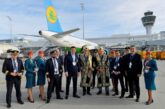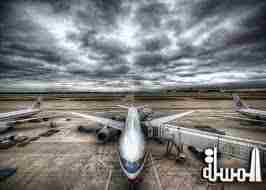
Checking in with the Airport Industry: Traffic Recovery, Disappointing Financials & Airline Subsidisation
Almasalla- Arab Travel Portal News – 013 saw a progressive recovery of air traffic, with Europe s airports welcoming an additional 50 million passengers and ultimately posting their highest passenger volume ever, with 1.66 billion passengers using their facilities.
 The European airport industry gathers in Frankfurt today and tomorrow for the 24th ACI EUROPE Annual Congress, Assembly & Exhibition hosted by Fraport. The theme of this year’s event is “Compelling Connectivity for our Cities, Regions and Europe”*. On this occasion, ACI EUROPE addressed the immediate outlook for its 461-strong airport membership spanning 44 countries.
The European airport industry gathers in Frankfurt today and tomorrow for the 24th ACI EUROPE Annual Congress, Assembly & Exhibition hosted by Fraport. The theme of this year’s event is “Compelling Connectivity for our Cities, Regions and Europe”*. On this occasion, ACI EUROPE addressed the immediate outlook for its 461-strong airport membership spanning 44 countries.
AIR TRAFFIC OUTLOOK
2013 saw a progressive recovery of air traffic, with Europe’s airports welcoming an additional 50 million passengers and ultimately posting their highest passenger volume ever, with 1.66 billion passengers using their facilities.
That traffic recovery has gathered further pace since the start of 2014, with passenger and freight traffic growing by +5.5% and +4.9% respectively. This reflects much improved trading conditions on the back of economic growth generally gaining momentum across Europe. Significantly, the performance gap between EU airports and non-EU airports is now at its lowest since the 2008/2009 financial crisis – with most airports in Ireland, Greece, Portugal, Spain and Cyprus enjoying a rebound.
Olivier Jankovec, Director General ACI EUROPE said ”Beyond these positive headline results, there is still a lot of contrast in individual airport performance. As with any competitive industry, this is not a win-win for all. Several large airports have enjoyed a traffic boost this spring as Low Cost Airlines are now clearly moving up market. However, these gains have often come at the expense of other secondary or regional airports.”
Although the conditions for a sustained economic recovery in the medium term are improving, GDP growth in the EU is set to remain moderate this year. Economic growth in Russia is likely to be almost flat and Turkey is also showing vulnerabilities. Meanwhile global growth is moderating – with economic analysts now fearing the increasing risk of a ‘hard landing’ for China. These fundamentals and the fact that demand for air transport had already started to increase as of last summer mean that traffic growth is likely to be less dynamic in the coming months. ACI EUROPE now forecasts for the full year 2014 total passenger growth at +3.5% and freight growth at +3%.
ECONOMIC & FINANCIAL PERFORMANCE
The net profit of European airports stood at €2.5 billion in 2012, representing an improvement of +13.6% on a per passenger basis over the previous year. However, this result owes little to improved operating margins. It is entirely attributable to a decrease in capital costs, which are finally easing – but still remaining well above their pre-crisis level and accounting for 30% of total airport costs.
44% of Europe’s airports are loss-making, and the industry’s average return on invested capital (ROIC) stands at 5% – well below the industry’s cost of capital and also below the average ROIC for the Global airport industry (5.9%). Airports in the Eurozone even underperform the European average at just 3.9%.
Jankovec commented ”Forget all the fuss about airports making money, our industry is not actually rewarding its owners and investors adequately. This is a reflection of ever increasing competitive pressures as well as of a weaker correlation between traffic growth and revenue levels.”
RENEWED COMPETITIVE PRESSURES & AIRLINE SUBSIDISATION
Competitive pressures on airports are now driven by the hybridisation of the airline industry, which has taken a new turn. While hybridisation is about the Low Cost Carriers upgrading their own products and luring more affluent passengers, it is equally about Full Service Carriers restructuring and simplifying their offerings, and, like the LCCs, increasingly competing on yields rather than capacity. These developments are pointing towards significant market changes for airports – with airlines of all business models becoming more flexible and responsive to change, and therefore enjoying stronger negotiating positions. .
Jankovec added “For now, the pie is getting both smaller and thicker for airports. Opportunities for new route openings are getting harder to come by. We have gone from 1141 net route openings across Europe back in 2010 to just 251 last year.”
By further changing the balance of the airport-airline relationship to the benefit of airlines, these structural market changes are ultimately translating into a weaker revenue environment.
This year, charges levied by Europe’s airports on airlines and passengers for the use of their facilities have decreased by -1.13% in real terms. This figure only relates to the nominal level of airport charges. It does not take into account the widespread financial incentives that airports are offering to airlines to support new route openings – or even existing routes in some cases.
The pressures on aeronautical revenues are prompting airports to keep developing alternative revenue sources, in particular through retail, food & beverage, but also real estate, advertising and car parking. In doing so, airports are targeting not only passengers, but also other visitors to the airport site. However, these activities also have to deal with their own challenges – from weaker consumer spending and market maturity to fierce off-site competition for both retail and parking as well as airline cabin bag restrictions or regulatory restrictions on the sale of certain products.
Jankovec concluded “There is no escaping the fact that airlines and passengers are benefiting from effective subsidies and paying far less than the cost of the airport facilities and services they are using. Charges paid by airlines only represent 14% of total airport revenues, down from 21% back in 2008. Even when factoring in charges paid by passengers for the use of terminals, the airport industry is left with a staggering €4 billion in unrecovered operating costs. This is why generating alternative – commercial – revenues has become so important. But we need to address many challenges to keep increasing these revenues – pushing innovation further and looking at cooperating with airlines to make the most of opportunities.”



